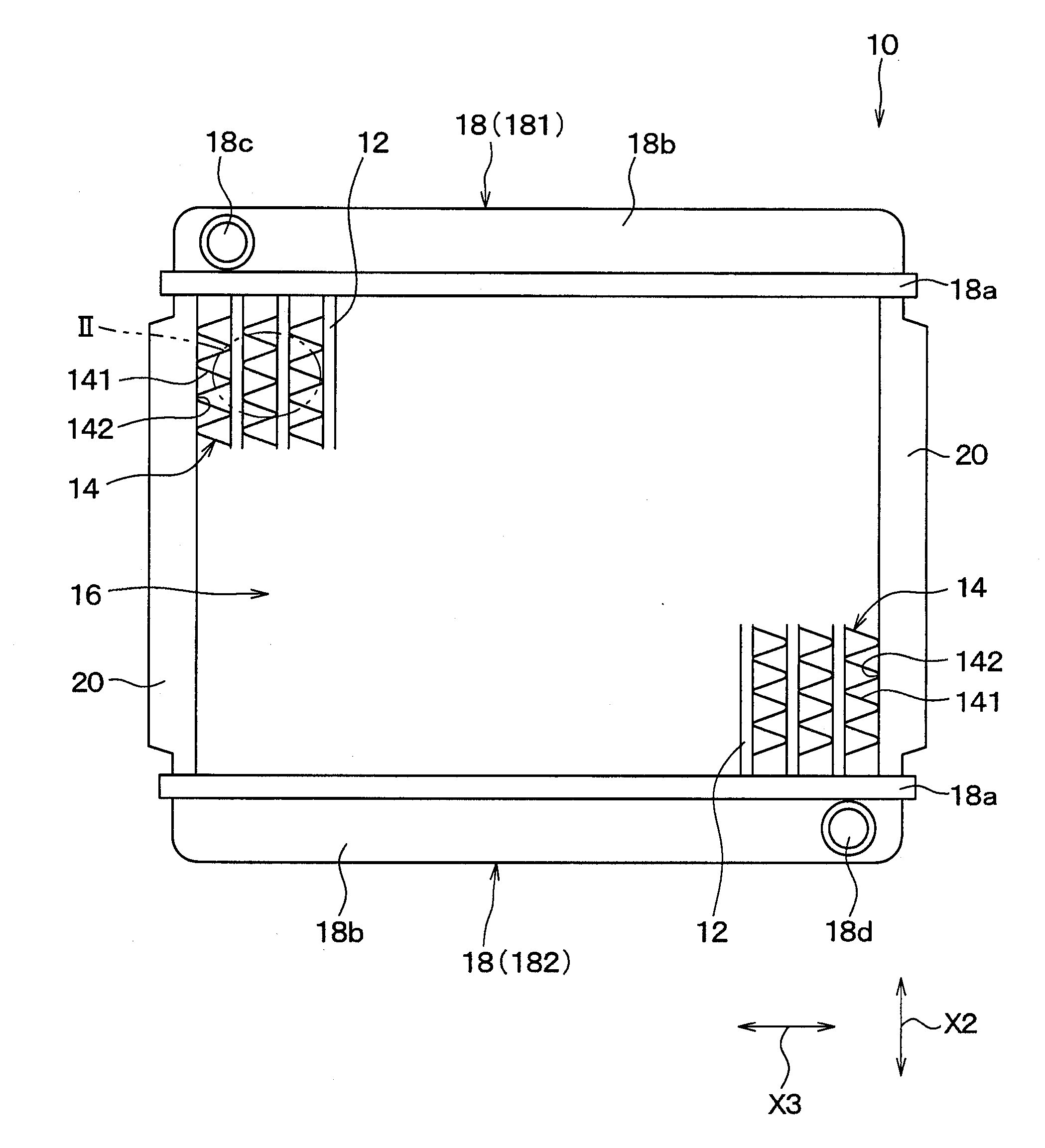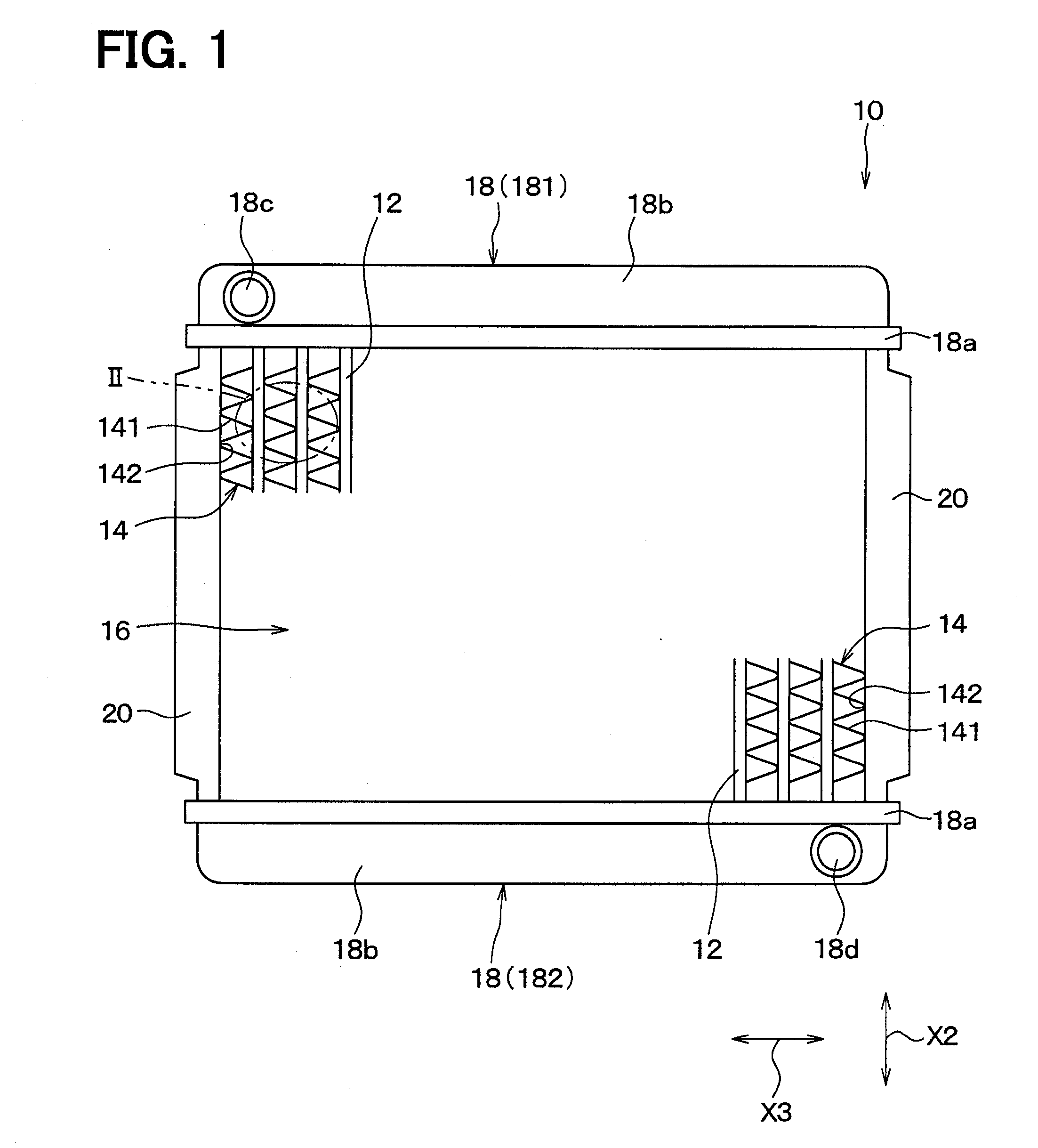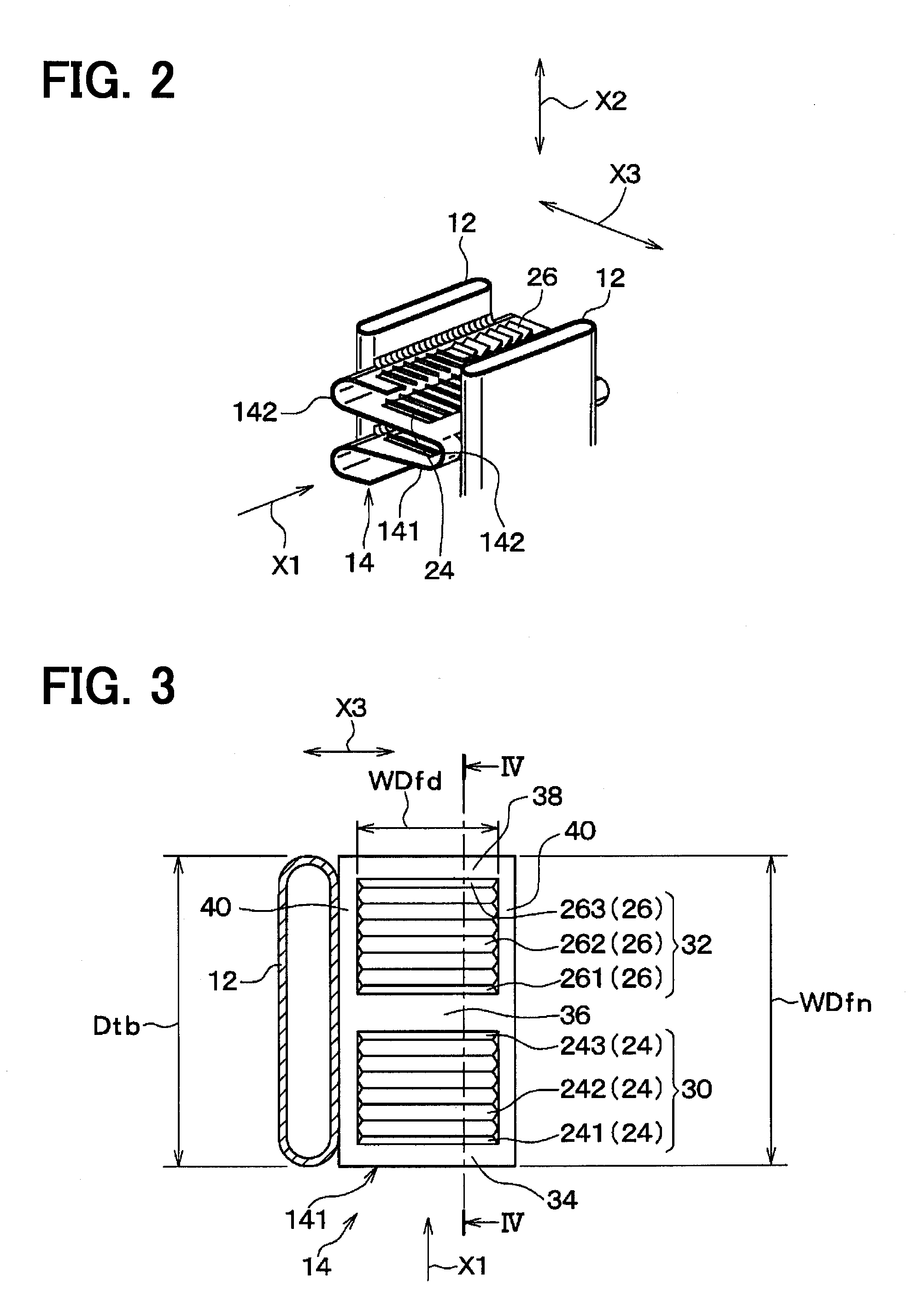Heat exchanger and manufacturing method thereof
a technology of heat exchanger and heat exchanger body, which is applied in the direction of heat exchanger fins, tubular elements, stationary conduit assemblies, etc., can solve the problems of affecting the heat exchange performance of the heat exchanger, so as to achieve enhanced heat exchange performance and easy stagnation
- Summary
- Abstract
- Description
- Claims
- Application Information
AI Technical Summary
Benefits of technology
Problems solved by technology
Method used
Image
Examples
first embodiment
[0046]FIG. 1 is a front view of a radiator 10 of the present embodiment. The radiator 10 is, for example, a vehicle heat exchanger that cools an engine or an electric motor that runs a vehicle. The present embodiment describes an example where the present disclosure is applied to the radiator 10. It should be appreciated, however, that the present disclosure may be applied to other heat exchangers, such as an evaporator and a heater core in an air conditioner.
[0047]As is shown in FIG. 1, the radiator 10 includes a tube 12 which is a pipe for a coolant as a first fluid to flow. The tube 12 is formed to have a flat oval cross section so that a longitudinal diameter direction coincides with a flow direction X1 of air as a second fluid, namely, an airflow direction X1 (see FIG. 2). Also, the tube 12 includes multiple tubes 12 which are disposed parallel to one another in a horizontal direction so that a longitudinal direction coincides with a vertical direction.
[0048]Fins 14 as a heat-t...
second embodiment
[0123]A second embodiment of the present disclosure will now be described. The present embodiment will chiefly describe a difference from the first embodiment described above. Portions same as or equivalent to the counterparts of the first embodiment above are not described repetitively or described briefly.
[0124]FIG. 15 is a view corresponding to FIG. 9 of the first embodiment above, that is, an enlarged view in the part IX of FIG. 5 in the present embodiment. In the first embodiment above, the louver side-end angle θsd varies with the louver height LH, which is different in the present embodiment. In other words, as is shown in FIG. 15, louver side-end angles θsd are equal to one another in all of louvers 24 and 26 regardless of a louver height LH.
[0125]Hence, as is shown in FIG. 15, when viewed in an airflow direction X1, louver base widths WDfd of an upstream-end first louver 241 and a downstream-end first louver 243 are short in comparison with intermediate first louvers 242. T...
third embodiment
[0128]A third embodiment of the present disclosure will now be described. The present embodiment will chiefly describe a difference from the first embodiment described above. Portions same as or equivalent to the counterparts of the first embodiment above are not described repetitively or described briefly. The same applies to fourth and subsequent embodiments below.
[0129]FIG. 16 corresponds to FIG. 4 of the first embodiment above and is a sectional view of a planar portion 141 and louvers 24 and 26 of a fin 14 when viewed in a direction same as the direction of FIG. 4. In the first embodiment above, all of the first louvers 24 are parallel to one another and all of the second louvers 26 are also parallel to one another, which is different in the present embodiment.
[0130]To be more specific, as is shown in FIG. 16, an upstream-end first louver 241 and a downstream-end first louver 243 are provided so as to have a large inclination angle with respect to an airflow direction X1, namel...
PUM
 Login to View More
Login to View More Abstract
Description
Claims
Application Information
 Login to View More
Login to View More - R&D
- Intellectual Property
- Life Sciences
- Materials
- Tech Scout
- Unparalleled Data Quality
- Higher Quality Content
- 60% Fewer Hallucinations
Browse by: Latest US Patents, China's latest patents, Technical Efficacy Thesaurus, Application Domain, Technology Topic, Popular Technical Reports.
© 2025 PatSnap. All rights reserved.Legal|Privacy policy|Modern Slavery Act Transparency Statement|Sitemap|About US| Contact US: help@patsnap.com



